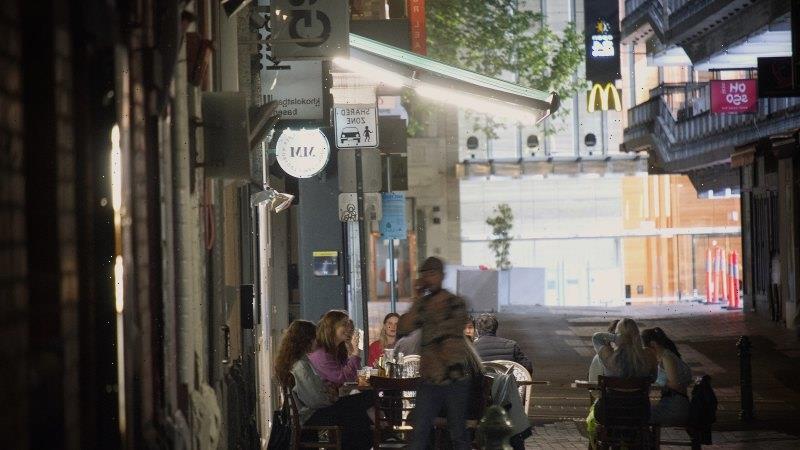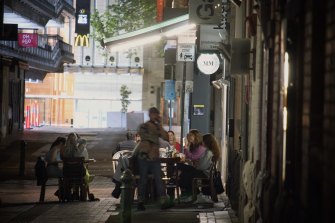For our free coronavirus pandemic coverage, learn more here.
On a warm Saturday night in Melbourne’s CBD, visitors would barely see a hint of the pandemic we have navigated for more than two years. The bars and restaurants, the diners spilling onto footpaths, the buzz that makes Melbourne so vibrant, seem to suggest all is well again.
Melbourne slowly comes back to life at The Hardware Club.Credit:Luis Ascui
But the weekend trade is, like Cinderella’s visit to the prince’s ball, something of a mirage. By Monday morning, the effects of COVID-19 – recommendations to work from home, compulsory mask-wearing indoors and a reluctance to return to the daily commute – make their presence known again and the CBD turns back into a pumpkin.
A recent Melbourne City Council survey suggested that three-quarters of businesses in the CBD are barely surviving. Foot traffic – an indication of economic activity – is lifting, but is still at barely half its pre-pandemic levels.
We may no longer be in lockdown, but for the businesses that rely on city workers, both during the working day and after hours, we may as well be, except this time some are doing it even tougher, says lord mayor Sally Capp: “Our traders are experiencing lockdown conditions without lockdown support from state or federal government.”
Clearly the longer this urban version of long COVID drags on, the more businesses will go to the wall. Precincts that rely almost entirely on office workers for weekday trade, such as Docklands, may never fully recover if they are allowed to further deteriorate.
Overseas, some cities, like Paris and London, have tried to attract workers and shoppers back to moribund districts by reducing the dominance of private cars and creating more liveable, walkable streets.
Closer to home, Sydney is considering converting offices into housing, building a new amphitheatre for outdoor performances, closing some streets to traffic after 6.30pm, opening a 24-hour market and repurposing car parking areas into skate parks to ostensibly attract “young people”.
Not everybody is convinced about these utopian schemes. The Washington Post’s Megan McArdle observes they “often seem to be recycling long-term items from progressive wish lists rather than addressing the looming crisis”.
The goal, she argued, should not be reimagining “urban areas as models of ecologically sustainable living, or social justice” but something more prosaic: getting people back into the CBD to once again fill restaurants, get haircuts and queue for their morning coffee. There is unlikely to be a total “snapback” and a three or four-day week in the office may be better for all in the long term. But what we have now is debilitating for all.
In Melbourne, the solution is relatively simple: remove the barriers that are discouraging a return to workplaces. We have made some positive steps. Offices no longer have capacity limits. QR code check-ins are under discussion now the data is no longer used for contact tracing.
But state government messaging still calls for people to work from home if it is practical. This should be reviewed and revised as soon as possible. Take health considerations into account, but explain when this recommendation will no longer be necessary, At some point soon, the government needs to actively encourage a return to workplaces.
Mask-wearing, too, should be reviewed soon. We don’t accept Opposition Leader Matthew Guy’s assertion that the rules are “confusing”. We must wear a mask in any public indoor setting unless eating or drinking. But we do question whether masks are still necessary in every workplace, given that most large employers require all their staff to be fully vaccinated and offer regular rapid testing. The government needs to explain the real risk and the point at which that risk is low enough to ease that rule. Again, we ask the state government for real information, planning and transparency.
Gay Alcorn sends an exclusive newsletter to subscribers each week. Sign up to receive her Note from the Editor.
Most Viewed in Politics
From our partners
Source: Read Full Article

